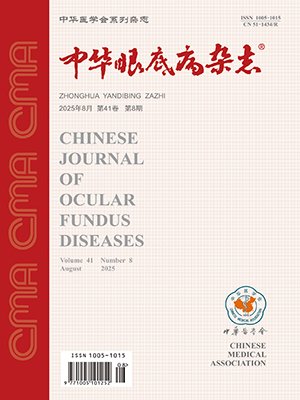Objective To investigate the clinical features of polypoidal choroidal vasculopathy. Methods The clinical manifestations and the findings of fundus fluorescein angiography (FFA) and indocyanine green angiography (ICGA) of 7 eyes in 6 patients with polypoidal choroidal vasculopathy were analyzed retrospec tively.Results The ophthalmoscopic examination of PCV in this series of patients revealed orange-red lesions mainly in macular region in early stage, and then hemorrhage, exudation, edema, serous and (or) hemorrhagic detachment of retinal pigment epithelium in affected portions in advanced stage, and retinal and choroidal atrophy in late stage. FFA discovered the vascular dilation at the border of the choroidal vascular network in 1 eye, dotted hyperfluorescence in 6 eyes, and patches of hyperfluorescence in late phase. ICGA disclosed a vascular branching network in choroid with polypoid pattern of the terminal path of the vessels of network in early phase in 5 eyes, and the typical dotted or clustered polypoidal hyperfluorescence in 7 eyes in late phase.Conclusion The characteristic findings of FFA and ICGA are very diagnostic for PCV. (Chin J Ocul Fundus Dis,2003,19:269-332)
Citation: XU Haifeng,DONG Xiaoguang,CHEN Nan,et al.. Clinical findings and characteristics of FFA and ICGA in polypoidal choroidal vasculopathy. Chinese Journal of Ocular Fundus Diseases, 2003, 19(5): 281-283. doi: Copy
Copyright © the editorial department of Chinese Journal of Ocular Fundus Diseases of West China Medical Publisher. All rights reserved




